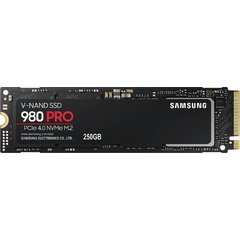WD Red SN700 250 GB PCIe 3.0 x4 (NVMe) M.2 3100MBps/1600MBps - WDS250G1R0C
Capacity: 250 GB BUS: PCIe 3.0 x4 (NVMe) Format: M.2 Speed: 3100 MBps (read) / 1600 MBps (write) Random Read (4K): 220000 IOPS
Interested in purchasing more units? Request an individual B2B offer for these products.
| Product code | 225.169769 |
|---|---|
| Part number | WDS250G1R0C |
| EAN | 718037891415 |
| Manufacturer | Western Digital |
| Availability |
In stock 0 pc
Stock allocation and delivery options
Transport company across Europe Thursday 26. 6. at the latest Wednesday 2. 7. |
| Supplier availability | In stock 20 pc |
| Warranty | 60 months |
| Weight | 0.35 kg |
| The price includes all legal fees | |
Detailed information
SSD
SSDs using SATA, SAS or NVMe interfaces are ideal for applications where the balance between read/write speed and affordability is important. They can be used, for example, as system disks, in database servers or IOPS-heavy hot-storage. In addition to its unrivalled speed, it offers, at a higher price, very low failure rates and higher reliability and resistance to vibration and temperature fluctuations. These drives are generally available in 2.5" format and they are therefore compatible with hot-swap slots designed for HDDs.
Speed
For SSDs, speed is most commonly divided into sequential speed, which is given in MB/s, and random speed, which is given in IOPS. SSDs are many times faster than traditional hard drives and are rapidly approaching in price in recent years. They also have a much lower access time and they do not wear out the disk during the reading process as is the case with traditional rotating disks.
Capacity
The capacity of a disk often determines its usage. High-capacity HDDs are used for storing and backing up large amounts of data. High-capacity SSDs are useful, for example, when multiple users are simultaneously working with large amounts of data in real time. On the other hand, SSDs with a small storage space are mainly used for the operating system and its fast running, or as a boot drive or hypervisor.
Lifespan
To determine the lifespan of the drive, TBW(TeraBytes Written) and PBW(PetaBytes Written) parameters are often given to indicate the total data written to the SSD before failure. The second most common designation is DWPD (Drive Writes per Day) indicating how many times per day the user can overwrite the entire capacity of the SSD for the duration of the warranty.
M.2
The M.2 format was created for modern SSDs both for operating system and fast data operation, but also for all-flash disk arrays that can sacrifice the hot-swap capability that M.2 drives do not offer. At the same time, however, it stands out for its small size as well as its lower price.














